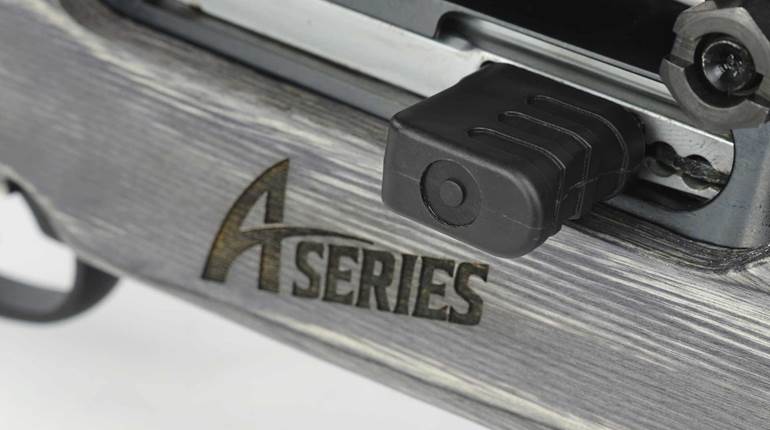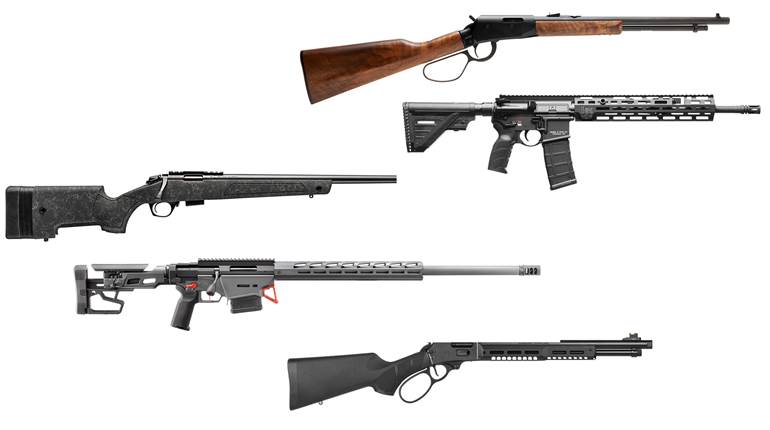
Ansley Hermon Fox was many things. A brilliant inventor, a top shooter (he nearly won the Grand American a few times), but modest, he was not. He declared his side-by-side “The Finest Gun in the World.” When it comes to American doubles, he may well have been right. Adding fuel to Fox’s ego (not that he needed it), President Theodore Roosevelt wrote in Scribner’s of the A.H. Fox FE Grade he took on his 1909-1910 African safari: “I had a Fox No. 12; no better gun was ever made.”
Fox’s A Grade, which sold for $50 in 1908, was declared in the shooting press “a popular all-round [gun] for the sportsman who wishes to put his money into a dependable gun on which the greatest expenditure is for quality, not ornament.” The guns were strong, yet small through the receiver, and Fox would make them as fancy as you wanted for the right price. Think $500 back in 1908. The original Fox used a rotary top hook and beefy rib extension for barrel locking, and the barrel lump was not a locking surface. The action was powered by coil springs made of piano wire, and was genius in its simplicity—and guaranteed to never break.
But Fox, despite his design brilliance, was not a very good businessman. To read the full story on A.H. Fox, I highly recommend the relevant chapter in the late Michael McIntosh’s America’s Best. Mac summed up A.H. Fox well with “There is little evidence that he was ever content to put out products solely for the sake of profit.” Suffice to say, by November 1929, after a series of different owners and investors, the A.H. Fox Gun Co. was owned by Savage Arms Co. Production moved from Philadelphia to Utica, N.Y. The Fox, as we know it, ended shortly after World War II. Except for the Fox Model B, but that’s another story.
The relationship between Fox and Savage actually goes back farther, to 1909, when one of the sharpest guys in the gun business, Albert W. Connor, went to work for Ansley Fox. Indeed, Ansley Fox made Connor vice president in charge of sales after Connor, as sales manager of Savage Arms, kept the New York maker afloat. Frankly, if it were not for Albert W. Connor we might not have a Savage today—let alone a new Fox.
The new “Fox A Grade” follows a concept that Albert Connor brought to Fox in 1910. What Connor wanted to sell, a lot, was that basic, strong action of the Fox gun but without all the ornamentation. And that’s what he got. But Ansley Fox couldn’t bear to have unadorned side-by-sides out there with his name on them. Nope. He insisted that Connor make the gun under the name of “The Sterlingworth Company.” That gun was advertised as “the finest $25 shotgun in the world.”

Today’s Fox Fervor
So, why all the focus on Fox? The Fox A Grade is back, thanks to Savage Arms Co. The announcement was one I had hoped would come for quite some time. Not that it’s worth wearing my pajamas backwards and putting ice cubes down the toilet, but I am delighted it has finally come to fruition—and with the right gun—one worthy of both the Fox and Savage names.
Former Savage President Ron Coburn, whose leadership literally saved Savage Arms from the abyss, always wanted to do a Fox, but he did not want to compromise the brand founded by the mercurial Ansley H. Fox. No, if there were going to be imports, they would bear the Stevens name. He was holding out for the right gun: an American-made gun.

The Right Partner
Although Coburn has since retired from the gun business, Savage Arms of Westfield, Mass., is now offering the “right” gun. It is called the “Fox A Grade series presented by Savage.” If that seems like a confusing mouthful, that’s because it is. The new Fox is made for Savage by Connecticut Shotgun Mfg. (CSM) in New Britain, Conn. You see, CSM already makes best-quality A.H. Fox guns (with the name licensed from Savage Arms) that can cost as much as a well-appointed house. Prices start around $38,000. Instead of trying to replicate the original Fox on the inside (CSM already does that), Savage and CSM worked together, and the specifications of the A Grade were set by Savage.
Last year I had the opportunity to visit CSM, and, needless to say, I was impressed. Anthony Galazan and his CSM crew are quite capable of making the “Finest Guns in the World.” It’s a unique mix of modern technology and old-school craftsmanship. The new A.H. Fox guns made by CSM may actually be better-fitted, better-finished and made of better materials than the originals. And Galazan makes Model 21s, Parkers and other best-quality guns of his own design.
There’s a reason why people say they don’t make them like they used to anymore. And that’s because making them like they used to is terribly expensive, mostly due to the handwork involved. In Galazan’s fitting room, artisans use lampblack and files to make the joint between wood and metal seamless. But how does he do it in today’s world? On the other side of the wall, banks and banks of CNC machines, EDM machines and laser engravers turn out precision parts. No doubt CSM has the finest double gun manufacturing facility in the United States. Frankly, it is the only factory in which best-quality and production side-by-sides and over-unders are made on American shores.

Under The Hood
The new A Grade (there is only one grade “presented” by Savage at this time) is a boxlock side-by-side with a bone-charcoal, color-casehardened steel receiver (hardened, not merely colored). And it’s not just the receiver, the fore-end iron receives the same treatment. The barrels, top lever, timed screws and escutcheons bear a bluing that demonstrates quite good polish underneath. The joint between the buttstock and the receiver is straight—not scalloped like the high-end Fox guns produced by CSM—and it resembles the original Fox A Grade and Sterlingworth in that regard.
The gun is a bit like a 2017 Ford Mustang. There is not the rotary top fastener of the original on the inside, just like the new Mustang doesn’t have a 289 V8 engine under the hood. The receiver bears the distinctive Fox contours on its sides, but lift the hood and you will find familiar features from the Rounded Boxlock (RBL) guns produced by CSM. Also, subtly, on each side are three letters: “FOX.”
The basic action is an Anson & Deeley boxlock as updated by CSM. Many of the interior parts, again like the RBL, have what the company calls “hard gold,” a gold titanium nitride finish. The double triggers, with the front firing the right barrel and the rear firing the left, bear this gold finish, as do the ejector sears, visible when the fore-end is removed. The selective automatic ejectors are called “Holland & Holland style,” their fit is seamless, and in testing they functioned perfectly every time.

The inside of the Fox reveals tried and true Purdey double under lugs. As the blued tang lever is pushed to the right, it retracts the dual lugs on the inside of the receiver out of engagement, allowing the barrels to tip forward. The hammers are powered by leaf or V springs, and the tang-mounted safety is automatic. The trigger guard is a blue steel, has a double-rolled edge so it won’t cut one’s fingers, and is a fairly generous oval suitable for gloved hands.
With the barrels off, you can see that the Fox does not have conventional monobloc construction, commonly leaving a seam ahead of the chamber covered by scroll engraving. No, the locking lugs are attached to a plate dovetailed to the barrels below the chambers. Barrels at the outset are 26" or 28" in either 20 or 12 gauge. They are chrome-lined, and both bores of the 20 gauge patterned for this story measured, 0.612", just slightly tighter than the nominal 0.614" for 20 gauge. The barrels have a raised top rib that is topped by a single brass front bead. Each Fox is fitted for interchangeable choke tubes, and improved cylinder, modified and full are supplied, but you can get others of the CSM pattern.

The guns have crisp double triggers, a buttstock with an English-style straight grip (which is appropriate for a gun with double triggers) and a fairly straight comb, dropping 1½" there and then 2 1⁄8" at the heel. Folks who don’t frequently shoot vintage guns quickly find out that they often have far more drop than today’s shooters are accustomed to shouldering. Not so with the A Grade.
The oil-finished American black walnut stocks on all of the Fox guns I have seen so far have been simply beautiful. The butt is topped by a ribbed, hard-rubber buttpad, and the wrist and fore-end are checkered. It is well-executed with no flattened points and is crisp. The splinter fore-end is retained by an Anson pushrod, rather than a Deeley & Edge recessed fore-end latch.
Ornamentation is tasteful and is mostly subtle scrollwork done by laser engraving. I’ve been to the CSM plant and watched those machines working. The technology has really come along way, and CSM is so good that you have to look closely to distinguish it from hand engraving. It is handsome, doesn’t look cheap and is not overwhelming.
 The Test Drive
The Test Drive
As an unabashed side-by-side fan, it was with great pleasure that I used a 20-ga. A Grade on the Valdina Ranch near D’Hanis, Texas. There, I hunted doves for a few days with a couple of old friends from Federal Premium Ammunition—as well as some new ones. On the first afternoon of hunting, our guide, Joe Murphy, asked what I was shooting, and when I replied that it was the new Fox, he immediately chimed in with the fact that his father was a collector of A.H. Fox guns. There’s something to that name. If you see an old American double in a duck blind or dove field, odds are it is a Super Fox or Sterlingworth—and Federal’s Drew Goodlin had the latter to shoot next to the new Fox.
I limited myself by choosing the 28"-barreled 20 bore for the mostly high-flying birds, but had very little difficulty on low to medium flying doves as the gun came up fast and swung very, very nicely. It also hit exactly where I pointed it. I also fired the Foxes on five-stand sporting clays, wobble trap and sporting clays, and I have about 2,000 rounds downrange with three different A Grades, mostly in 20 gauge. There were absolutely no malfunctions whatsoever. On hot days with a high round count and no padded shirt, though, a leather-covered buttpad may have been welcome.
At $5,000, the gun is not inexpensive, yet it is a classic American-made game gun updated, revised and now in production. Indeed, the finish work throughout is top-notch—the best American craftsman can produce at a somewhat reasonable cost. It’s a gun in “which the greatest expenditure is for quality, not ornament.” I would not presume what A.H. Fox himself would have to say about the new A Grade, but I am confident Alfred W. Connor would, no doubt, be pleased. I know I am.







































